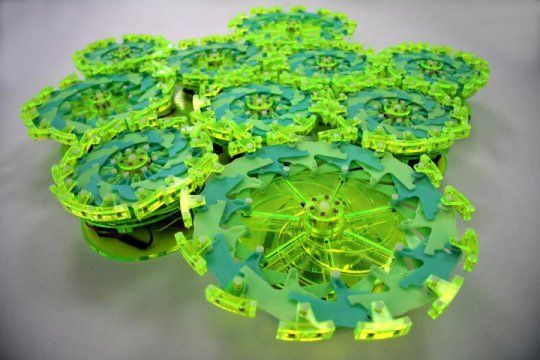The "Gray Goo" - A Robot Comprised Of Billions Of Nanoparticles
Apr 10, 2019 • 14 views
Have you heard about the nanoparticle? Are they able to work as single unit and perform strategical movement?
Particle Robots are combination several type of the loosely connected material. They have similar motion according to the small particles. But group of the robots produces nice locomotion activities that are created for the constructive working pattern.Current robots are united or constructed as one part. If of the robots fails then it is necessary to replace all parts of robots with new element but in nanoparticle concept if one part of the robots fails then remaining performs the activities which are failed by the one.

In a new study published today in Nature, researchers at Columbia Engineering and MIT Computer Science & Artificial Intelligence Lab (CSAIL), demonstrate for the first time a way to make a robot composed of many loosely coupled components, or "particles." The team, led by Head of department Lipson, professor of mechanical engineering at Columbia Engineering, and CSAIL Director Daniela Rus, discovered the experiment that the nano particle starts motion in the way of light and after certain time the whole body will move as a nano-particle.
"You can think of our new robot as the proverbial "Gray Goo," says Lipson. "Our robot has no single point of failure and no centralized control. I makes fundamental robot paradigm possible. Researchers are building the autonomous robots that are able to move with the strategical path. The Columbia Engineering/MIT team has been focused on developing robust, scalable robots that can function even when individual components fail.
"We've been trying to fundamentally rethink our approach to robotics, to discover if there is a way to make robots differently," says Lipson who directs the Creative Machines lab. "Not just make a robot look like a biological creature but actually construct it like a biological system, to create something that is vast in complexity and abilities yet composed of fundamentally simple parts."
Suppose, for example, that a robot needs a screw driver from the table -- the screw driver is too far to reach. What if the robot could reshuffle its cells to grow an extra long arm? As its goals change, its body can change too."
The team, working with Chuck Hoberman at Harvard's Wyss Institute and other researchers at Cornell, used many identical components, or particles, that could perform a simple motion like expansion and contraction. In simulations, they demonstrated robots comprising 100,000 particles. Experimentally, they demonstrated a system comprising two dozen particles.
"The particles closer to the light source experience brighter light and thus start their cycle earlier"
Modeling this behavior in simulations, they explored obstacle avoidance and object transport at greater scales, with hundreds and thousands of particles. They were also able to demonstrate the resilience of their particle robot paradigm both to noisy components and to individual failure.
"We think it will be possible one day to make these kinds of robots from millions of tiny particles, like micro beads that respond to sound or light or chemical gradient," says Lipson. "Such robots could be used to do things like clean up areas or explore unknown terrains/structures."
